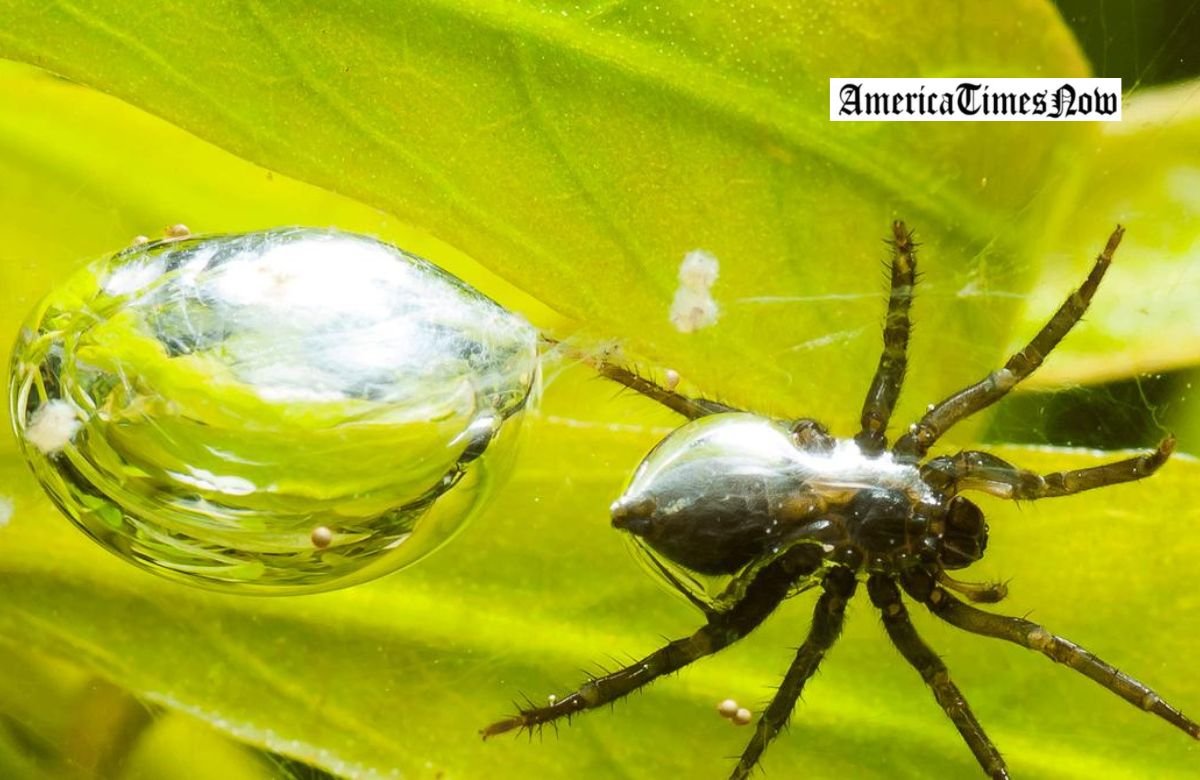The Diving Bell Spider: Nature’s Aquatic Architect
Dive into the fascinating world of arachnids with the Diving Bell Spider, scientifically known as Argyroneta. This unique spider belongs to the Arachnid family and showcases extraordinary adaptations that set it apart from its terrestrial counterparts. In this beginner’s guide, we’ll explore the captivating life of the Diving Bell Spider, its habitat, behavior, and the incredible techniques it employs for survival.
Meet the Diving Bell Spider:
The Diving Bell Spider is a master of underwater living, showcasing an intriguing set of characteristics that make it a standout among arachnids. Found primarily in freshwater habitats across Europe and Asia, these spiders have evolved to thrive in aquatic environments, demonstrating nature’s incredible diversity.
Habitat and Distribution:
Unlike traditional spiders that spin webs in trees or corners of homes, the Diving Bell Spider calls underwater realms its home. These arachnids are commonly found in slow-moving streams, ponds, and marshes where they construct their unique dwellings. The ability to live in both stagnant and flowing waters showcases the versatility of the Diving Bell Spider.
Construction of the Diving Bell:
Argyroneta’s most remarkable feature is its ability to create an air-filled chamber, known as the diving bell, which enables it to survive underwater. The spider achieves this by collecting air from the surface and weaving it into a silken structure. The silk acts as a physical barrier, preventing water from entering the bell, thus creating a dry, breathable environment for the spider.
Transitioning to the Diving Bell:
To comprehend the marvel of the Diving Bell Spider’s construction, it’s essential to understand the process. First, the spider captures air at the water’s surface by forming a bubble on its abdomen. This bubble then becomes a part of the intricate silk structure, creating the diving bell. The spider continuously replenishes the air supply, ensuring its survival beneath the water’s surface.
Active Hunting Techniques:
While many spiders passively wait for prey to stumble into their webs, the Diving Bell Spider adopts a more active hunting strategy. With the use of specialized hairs on its legs, the spider detects vibrations in the water caused by potential prey. This heightened sensitivity allows the arachnid to locate and capture small aquatic insects and even small fish, showcasing its adaptability to an underwater lifestyle.
Reproduction and Parental Care:
The Diving Bell Spider’s life cycle is equally intriguing. After mating, the female lays her eggs inside the diving bell, carefully guarding them until they hatch. Once the spiderlings emerge, they stay close to their mother for protection and guidance. This unique approach to parental care sets the Diving Bell Spider apart in the arachnid world.

Adaptations for Survival:
The Diving Bell Spider has evolved a set of remarkable adaptations that contribute to its success in underwater environments. Its ability to breathe air stored in the diving bell allows it to stay submerged for extended periods. Additionally, the silk used in the bell is not only a structural marvel but also serves as a protective barrier, shielding the spider from predators and harsh weather conditions.
Conservation Status and Threats:
While the Diving Bell Spider is not currently considered endangered, its habitat faces threats from pollution, habitat destruction, and climate change. Conservation efforts are essential to preserve the delicate balance of freshwater ecosystems and ensure the continued survival of this unique arachnid species.
Conclusion:
In conclusion, the Diving Bell Spider is a captivating example of nature’s ingenuity. Its ability to thrive underwater, construct elaborate dwellings, and actively hunt for prey make it a standout in the world of arachnids. As we continue to explore the wonders of the natural world, the Diving Bell Spider serves as a reminder of the diverse and remarkable adaptations that enable creatures to thrive in even the most unexpected environments. So, dive in and discover the extraordinary world of the Diving Bell Spider – a true marvel of nature’s aquatic architecture.







